

Electronic Payment Systems (EPS) bring together telecommunications, data processing, data storage and microcomputer technologies and apply them to the process of revenue collection, record keeping and funds transfer. In general, the process can be divided into:
From the point at which a payment is initiated details of the event need to be transferred securely to the organisation that manages the back office to credit the payment to the organisation that provided the service. The process chain depends on agreement on:
Payment starts with an action by the user to show that he or she is eligible to access a service or liable to pay the toll or charge. The payment is done by the user paying directly or alternatively by providing an identifier that is linked to a user’s account which is charged. The MOP is the combination of transactions necessary to perform the payment and identify the account to be charged (See Methods of Payment) For example:
Vehicle detection, automatic location, communications, and security mechanisms all contribute to determining when, how, and how much to pay for the use of a transport service or road infrastructure. For example, many examples, such as toll collection, off-street parking and access for HGVs at a port, depend on the presence of the vehicle and so vehicle detection and measurement are critical. Tolls and charges may vary according to the vehicle’s location, so that the ability for a user (or a road operator) to know the road on which the vehicle is being used is important.
All Electronic Payment Systems (EPS) require some form of data capture and temporary storage as part of the information chain – from the event that triggers a payment to completion of the payment transaction. The event can be:
Each transaction needs reliable data capture and secure data transfer (See Supporting Technologies).
Other factors that need to be considered in the design and implementation of an EPS include:
The financial viability of every electronic payment scheme depends on being able to collect revenues owed and to deter non-compliance. This involves checking that all transport network users comply with advertised regulations. The back office will process the payments, match payment events with accounts, provide enquiry services, interface with the banks – and take on many or all of the functions required to perform enforcement operations.
Traditionally, the back office for a single public transport operator would support cash payments and a branded proximity card used for electronic ticketing. An integrated public transport payment scheme might additionally need to deal with bike hire, taxis, national rail lines and the transport providers in other towns and cities.
The back office for integrated transport needs to grow to match the complexity and range of services offered. New organisational arrangements may be required to enable multiple shared Methods of Payment (MOPs) managed by a variety of service providers – for example mobile network operators, banks and other institutions that already have many of the back office functions in place. There are organisational models for Electronic Toll Collection (ETC) that encourage this, such as the European Electronic Toll Service (See Enforcement and Back Office Arrangements).
The take-up of electronic payment for different transport services may reach a point where there is a need to harmonise different Methods of Payment (MOPs) so they can be offered across alternative transport modes, between different transport operators and allow travellers to access complementary services. The challenge is to establish interoperability, which may require agreement to harmonise different payment systems at the technical, contractual / legal and business levels (See Standardisation & Interoperability Issues). Videos: How Electronic Tolling Works on NH-8 & Interoperable Electronic Toll Collection
“Method of Payment” (MOP) is a term used to describe the means by which Electronic Payment Systems (EPS) complete the payment transactions. In general, the payment process can be divided into ‘front end’ activities – in which the user participates – and the ‘back office’ responsible for account maintenance, transaction processing, revenue management and settlement, customer relationship management (CRM), enforcement operations, reporting and auditing.
A number of technologies have been adapted to act as the front end for an MOP and are in widespread use:
The most common MOPs are those that are carried by people (mobile and personal technologies) or which are vehicle-based – such as a tag (or OBU) or an externally readable identifier such as a vehicle’s number plate. In addition, there are important supporting technologies that are applied, for example to measure a vehicle’s use of the highway, including vehicle detection, automatic location and communications.
Other critical ‘enablers’ include human factors and security mechanisms, introduced below.
Wireless communications play a part in most Electronic Payment Systems. For example they may be used by a toll tag to communicate to a roadside system or terminal the identity of an account and – depending on the application – the value of funds held in the account or card. This has to be done in a secure manner without risk of compromise. The widespread use of these technologies has means that standards are critical to define the data stored, the mechanisms for data transfer, security requirements and the maximum time permitted for the transfer (See Electronic Payment).
So-called “contactless” smartcards or proximity cards make use of wireless Near-Field Communications (NFC) over a range from a few millimetres to a few centimetres. They are commonly used by travellers carry to pay for services and regulate entry to metro rail networks, to access an off-street car park or to pay a fee at a parking meter.
Tags installed on vehicles have a longer range. For electronic toll collection Radio Frequency Identification (RFID) and Dedicated Short Range Communications (DSRC) tags are used with a range from 5 to 10 metres.
Proximity cards are an attractive means of payment for high volume mass transit systems because of the speed of payment and convenience for the user – see below. Depending on the application, these have a very short range (such as up to 10 centimetres) and a rapid transaction time (much less than half of one second).
Smart phones are gaining ground as a means of payment for public transport, such as on buses, trams and subway services (See Passenger Fare Payment) provided that minimum performance requirements are satisfied.
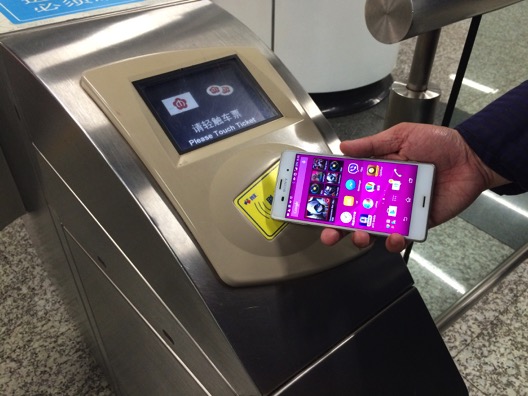
Using an NFC-equipped mobile phone at a turnstile of a metro station - simulated
A toll tag or On-Board Unit (OBU) for electronic payment can be one of two types:
The term OBU can apply to a tag but is usually applied to a more sophisticated in-vehicle device, perhaps including some combination of a card reader, display, keypad or a satellite receiver – to enable the OBU to determine its own position and perform some calculations to determine road usage. It is one of three main components of a vehicle-related Electronic Payment System:
In most toll applications the toll tag or OBU is usually secured behind the rear-view mirror as in the Figure below. Generally tags have a footprint similar to a business card and range in thickness from 1 millimetre to about 15mm depending on the communication technology and application.
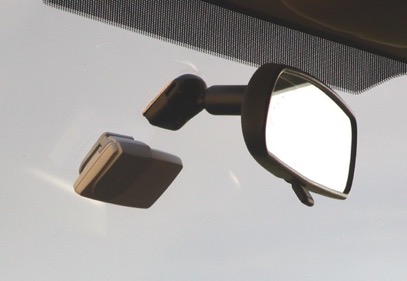
Figure 12: Example of a DSRC toll tag (Australia)
The toll-tag or OBU relies on low-power Radio Frequency (RF) or microwave energy to communicate. When the tag passes through the capture zone of the roadside antenna, the tag transfers information wirelessly to be processed by a computer system. The correct account is charged or, if the tag includes a smart card, the card may be debited. For example the South Korean Hi-Pass national ETC scheme uses an RF tag that accepts a smart card as an electronic purse, that may be reloaded at banks with amounts upwards of KRW 10,000 (c. USD 9.5).
Electronic Commerce (eCommerce) is defined as the systems and activities that enable the purchase of goods and services via electronic channels, already widely implemented through the Internet for users at their personal computers (See eCommerce). More specifically relevant to ITS, Mobile Commerce (known as ‘mCommerce’) refers to the use of mobile devices such as mobile phones as payment platforms to access or purchase transport-related services. A mobile phone is already regarded as a relatively secure device, many of which are equipped with a Security Identification Module (SIM) to establish a contractual connection to the network of a Mobile Network Operator (MNO).
Smartphone applications are already used as a MOP for an Electric Vehicle located at a specific charging point – shown below. The application may also provide other services such as displaying the location of available charging points and remote reporting of the charging process itself.
![Figure 14: Mobile phone application to pay for Electric Vehicle charging services (USA)] Mobile phone application to pay for Electric Vehicle charging services (USA)]](/sites/rno/files/public/wysiwyg/import/user-services/1439818819html_html_520b8954.png)
Mobile phone application to pay for Electric Vehicle charging services (USA)]
A proximity card may also be used as a means of payment for at an Electric Vehicle charging station, shown below.
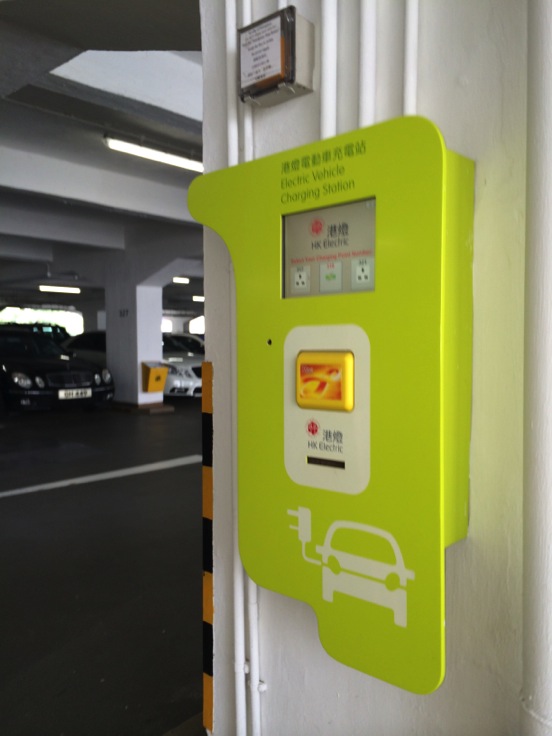
Octopus card reader at an Electric Vehicle charging station (Hong Kong)
Many electronic payment systems, such as toll collection, off-street parking and port access for HGVs are trigged by the presence of the vehicle itself. Some technologies for vehicle presence detection are also able to perform other vehicle-specific measurements. Examples are in-ground inductive loops and cameras with image processing software, both capable of classifying a vehicle. Sensors that depend on their deformation to sense a vehicle include treadles, capacitive sensors and piezo sensors, each of these formed into strips that are embedded into the road surface (See Roadway Sensors).
The configuration of non-contact, above-ground sensors depend on the desired location; laser scanners, radar and cameras may be used above traffic lanes whilst side-mounted optical light curtains and laser scanners are suitable for toll lanes. All of these rely on additional processing to properly interpret approaching vehicles and to reject objects such as pedestrians, animals and shadows and reduce the impact of rain.
Vehicles may be subject to regulations that depend on their location on the road network. For example, a national road user charging policy may be based on the distance that a vehicle has travelled, where charges also depend on the type of vehicle and road. (See Electronic Payment) To do this, a vehicle may be equipped with an On Board Unit (OBU) that is able to keep track of its own position based on detecting the signals received from GNSS satellites. The estimated position can be calculated within the OBU and the road segment then identified or, the required charge may be calculated at a back office by communicating the usage information instead – as shown below.

GNSS-CN On Board Unit for HGVs (Germany)
A charging policy may be based on a vehicle driving through a cordon into a controlled area (such as Singapore) or within an area (such as in London). It may be challenging to meet accuracy requirements where buildings or tall vehicles in an urban environment restrict satellite visibility. This effect (and the time to conduct a measurement) can be reduced if more than one satellite network – GPS, Galileo, GLONASS, BeiDou or a combination of all – is monitored at the same time. Alternatively, inertial sensors may be used to estimate the vehicle trajectory during the time that the GNSS signal is lost
The use of short-range communications for personal- or vehicle-based MOPs is described in the Section on Methods of Payment (See Methods of Payment).
Longer-range communication based on Cellular Networks (CN) provided by Mobile Network Operators (MNOs) may be used to gather data from OBUs in order to charge a road user’s account and to provide updated files (such as road maps) to an OBU. When used with GNSS-based position estimation, the combined technology is known as GNSS-CN. In addition, fibre networks, leased line or wireless communications may be used by roadside systems for tolling or enforcement to send vehicle identification records, data and images, to a back office for further processing. Handheld terminals to manually check HGV compliance would also use wireless networks for real-time access to vehicle databases.
All EPS require some form of data capture and temporary storage as part of the information chain from some event that initiates a charge. Examples are the presence of a vehicle presence in a toll lane, a user presenting a smart card at a turnstile to access a subway network, or a roadside enforcement system that captures an image of a HGV that is operating outside of permitted travel corridors.
The policies on data capture and management are critical to an EPS to ensure that it is secure, may be trusted and is of unquestionably high integrity that it may be used for compliance checking and (if needed) for enforcement. Some data does not contain anything that could be traced back to an individual (such as a radar image of a vehicle) but other data could be linked to an individual (such as a Vehicle Registration Mark, VRM). Data ownership, sharing, data types, sources of data, ownership, who’s entitled to it and general privacy issues are important aspects of any EPS deployment (See Privacy).
Security of data transmission is critical to ensure the financial viability and stability of electronic payment systems. Data may be subject to loss, intentional interception and tampering, spoofing (masquerading as a data source or receiver) and other attacks. Security mechanisms include watermarking (to detect tampering), encryption (to preserve confidentiality of the data) and authentication (to ensure that the sender and receiver are who they say they are) are critical to all EPS. Commonly, banking standards may be used to define the security requirements for EPS, particularly as the various MOP that are accepted by transport service providers would be expected to be in widespread use in the public domain.
The design and of devices and equipment needs to consider the interaction of people with EPS technology. The scientific discipline is known as human factors and ergonomics and applies to the design of in-vehicle equipment (such as tags and OBUs) and other MOP and payment platforms such as mobile phones and wireless smart cards (See Systems Approach and Design Process).
Mutual recognition of one or more Methods of Payment (MOPs) between different transport operators can enable the payment of tolls, public transport services, Electric Vehicle (EV) charge points, public cycle hire schemes and many other transport-related value added services. This flexibility is very attractive to travellers but requires a common – standardised – payment system and/or interoperability between different payment systems.
Interoperability aims to ensure consistency in the way that data is stored accessed and transferred between different MOPs and between the transport operators and payment service providers. It also enables a road user or public transport passenger to have confidence that his or her MOP will be accepted on a variety of transport modes.
Interoperability means that a MOP may be used without reconfiguration or modification to enable a road user or public transport passenger to pay for tolls, parking and public transport. Interoperability can be further developed to enable the payment of road user charges, Electric Vehicle (EV) charge points, public cycle hire schemes and many other transport-related value added services.
To establish interoperability requires agreement at the technical and contractual levels so that the significant societal benefits from interoperability may be delivered. A critical success factor in the implementation of interoperability is often a government body (a ‘champion’) that is able to focus on the benefits of society as whole (and not just individual operators), which may fund the development of interoperability specifications (for example: Chile, Norway and the UK)
Technical standards for EPS technology cover data exchange as well as equipment and communications. Standards aim to ensure consistency in the way that data is stored, accessed and transferred between a MOP and a reader, and between transport operators and payment service providers. Although standards are necessary, they are not always sufficient since a standard may have many options that may be selected and so some additional specifications sometimes known as ‘profiles’, may be needed.
Standards have been developed for tags used for tolling, such as Title 21 (generally California only), ISO-18000-6C and European Norm EN15509: 2007 (European Union) To confirm technical compliance, a MOP and the readers would commonly be subject to conformance test procedures, also defined by standards.
The world’s largest, multiple agency ETC scheme is E-ZPass that depends on a common proprietary single-source RFID tag (used as a MOP) supported by procedural and business level agreements amongst all participating operators known as the InterAgency Group, IAG. (See E-ZPass Group: Operating Agreement and Reciprocity Agreement (http://www.e-zpassiag.com).
For public transport, the most common standards are for smart cards – EMV (Europay, MasterCard and Visa) and MIFARE (a proprietary technology) for hybrid (contact/wireless) and wireless cards respectively. The Near Field Communication (NFC) standards embedded in cards and mobile phones are also used for MOPs, most commonly for public transport.
Certification processes can help ensure that equipment is safe and fit for purpose; open procurement processes are a means of stimulating competition.
With some exceptions, the challenges to establish interoperability involve reaching agreement at both the technical and contractual levels. Agreements are often use to describe operational procedures between organisations and, if this process is incomplete, it is possible that the benefits of interoperability may not be fully delivered, either to the transport service provider, to users or to both. For example, a group of transport service providers who wish to employ a smart card that complies with International Standards Organisation (ISO) / International Electrotechnic Commission (IEC) 14443 as a MOP that is to be issued and accepted by each provider will need to agree on:
Interoperability enables a single MOP to be accepted within and across modes. Adopting this policy can reduce procurement risk of MOPs by transport service providers sharing a common specification and can increase user choice amongst multiple competing MOP providers. If a single provider’s electronic tolling tag is usable at multiple locations then this would be de facto interoperability, but procurement risk depends on the delivery performance of one provider and there may be limited consumer choice of MOP variants.
An example of a comprehensive, multiple-service provider interoperability model is the European Electronic Toll Service (EETS) that separates the functions of toll collection, tolling account management and process governance, enabling organisations to specialise. In particular, Ireland has one of the most mature EETS schemes in Europe. (See: National Roads Authority (Ireland): http://www.nra.ie/tolling-information/)
In general, institutional barriers may slow down or prevent agreement on interoperability and therefore the most successful schemes are those that have addressed these. Efforts to ensure interoperability for Electronic Toll Collection (ETC) have not included procedures and evidential requirements for cross-border enforcement (for example the EETS definition does not include this).
Other challenges exist in establishing new services with incompatible competing standards such as physical interfaces for Electric Vehicle charging and transaction reports generated by GNSS OBUs to report road usage.
Overall, despite the many benefits to users of interoperability described here, the benefits to an operator may be limited, or there may be a net cost to the operators that could make it difficult to implement interoperability or prevent it happening at all.
European Commission (2011) Guide for the Application of the Directive on the Interoperablity of Electronic Road Toll Systems, available for download at: http://ec.europa.eu/transport/media/publications/doc/2011-eets-european-electronic-toll-service_en.pdf
CEN European Committee on Standardisation (2007) EN15509: 2007 Road transport and traffic telematics - Electronic fee collection - Interoperability application profile for DSRC, CEN (http://www.cen.eu )
International Standards Organisation ISO/IEC 18000-6C:2013 Information technology - Radio frequency identification for item management (http://www.iso.org)
California Department of Transportation (Caltrans) (2007) Compatibility Specification for Automatic Vehicle Identification Equipment (Title 21), Caltrans (http://www.dot.ca.gov/hq/traffops/itsproj/Title_21/title21_index.htm)
EMVCo, (2013) Integrated Circuit Card Specification for Payment Systems v4.3 (http://www.emvco.com/specifications.aspx)
EasyGo (http://easygo.com/en )
Back office processes match payment events with accounts, provide enquiry services, interfaces with banks and include many or all of the functions required to perform enforcement operations. Back office services include account management, enquiry handling, billing, legal support, interfaces to payment service providers and enforcement operations, shown in the diagram below. A back office represents a wide range of functions and administrative processes that follow well-defined business rules to create predetermined outputs meeting quality of service expectations.
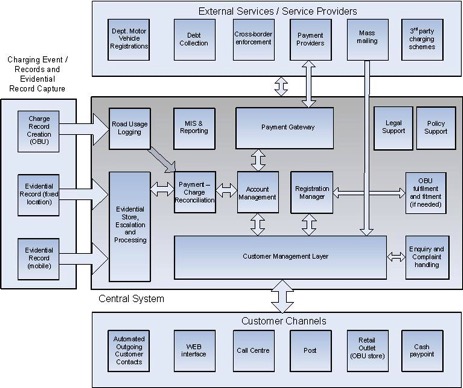
Back office functions
Many travellers will already be familiar with the activities of back offices in non-ITS areas such as banking, cable TV companies, utility companies and mobile phone network operators. The back offices of all of these organisations provide services based on time and usage. They maximising the opportunities for customers to acquire these services and pay for them, denying the service to users that do not comply with regulations.
For EPS, the back office consists of the Information Technology (IT) and core functions on which charging, enforcement and all external interfaces depend. As cash is replaced by non-cash MOPs it becomes necessary to provide systems, procedures, human resource management, to deal with the collection, analysis and allocation of EPS events to payments made or to user accounts. In general the functions that comprise a central system can be split into several areas:
It is not necessary that all functions need to be provided by the same organisation; this would mean that every bus company or toll road operator would need to develop its own complete back office. Standardisation can enable interoperability which allows for the management of a MOP to be totally independent from the transport services providers (See Standardisation and Interoperability).
Enforcement is the means of ensuring compliance with the regulations by deterring attempts at non-payment and providing the means to collecting outstanding payments. In most cases, the economic viability and sustainability of an EPS service depends on having an effective means of enforcement, which may mean using legal processes. If the accuracy of local or centralised database of vehicle owners is adequate then it becomes possible to reliably trace owners by capturing the image of a vehicle where there is non-payment (as evidence of a vehicle’s presence) which shows the Vehicle Registration Mark (VRM). This type of ‘evidential enforcement’ process needs to be trustworthy, secure and accurate.
One of the most effective forms of enforcement is to deny the delivery of a service to a user. For passenger transport a turnstile or gates may be used to ensure that a passenger needs to present a valid MOP before entering or exiting the public transport network. On a toll road and for off-street parking operators this means using ‘physical enforcement’ with barrier, as shown below, to prevent a vehicle entering or exiting a route until a valid MOP has been presented, including cash or some other form of identification. Alternatively, hydraulically operated bollards, as shown in the second picture, could be used to restrict vehicles within a city to specific types such as buses and taxis although these take many seconds to be raised and lowered.

Physical enforcement – barrier in a toll lane (Spain)

Hydraulically operated bollard – restricted vehicle access (UK)
Although physical enforcement with barriers is an effective means of toll collection, it reduces the speed of vehicles and can only be used on the open highway without a toll plaza. Instead ‘evidential enforcement’ approach is necessary, based on overhead-mounted cameras shown below. The cameras are used to capture one or more images of any vehicles that is suspected of not complying with the regulations governing the use of the road – such as a vehicle that is not equipped with a tag, shown in the screen display in the second photograph.
Back office functions relating to camera enforcement include manual image interpretation, image storage, general legal support and image viewing facilities for staff authorised to issue fines or penalties. Note that an image of a vehicle may be regarded as ‘personal data’ and its use may be subject to local regulations on data protection (See Privacy).
If the toll road operator offers users’ accounts that are linked to a vehicle’s number plate, overhead cameras could perform the dual roles of video tolling and enforcement against non-payment. Optical Character Recognition (OCR) is used to interpret each image to extract the Vehicle Licence Plate Registration Mark (VRM) by a camera that is capable of Automatic Number Plate Recognition (ANPR) or the back office, or a combination of OCR at both, to allow enforcement to be partially automated such as the check of national vehicle databases.
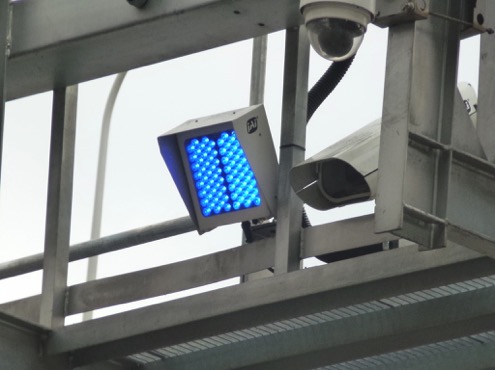
An enforcement camera and related illumination source (Taiwan)
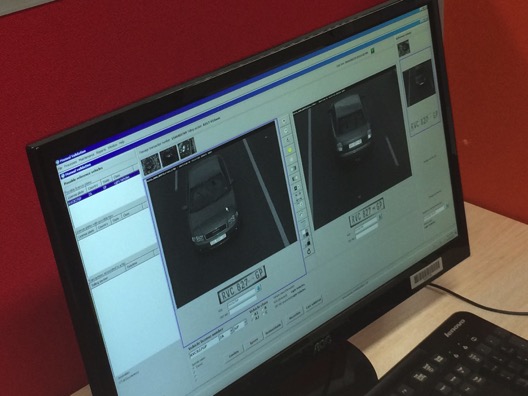
Images of vehicles front and rear number plates and related metadata
For truck tolling, enforcement against non-compliance may require a combination of fixed roadside systems, illustrated below, that combine all of the technologies described above. These methods may be reinforced with plus mobile patrols with vehicle-mounted or handheld equipment to interrogate the On-Board Units and capture Licence-plate. Transponders with visual or audible indicators are sometimes used to signal to the driver that he is permitted to bypass a weigh station without stopping based on historical compliance (as used in the US). At border crossings within customs unions, or on the approaches to weigh stations, the aim is to optimise inspections with the need to keep traffic moving (See Enforcement).
In 2014, Norway mandated the fitment of DSRC transponders on all HGVs to improve compliance checking, an advantage for enforcement operations in harsh weather conditions.

Static compliance checking for HGVs (Switzerland)
A successful Electronic Payment System is one that is widely adopted for transport-related services. This is likely to mean that a number of organisations will need to cooperate to deliver a comprehensive transport service, to a population that may have little or no experience of non-cash MOPs and where internet usage is low. Lack of expertise may prohibit a local authority or private toll road operator from selecting the most appropriate MOP or developing a procurement specification for back office services – particularly where interoperability is needed. Consultation with those who have been involved in commissioning comparable projects elsewhere is recommended.
Regions that have a high proportion of users on public transport offer a potential for successful use of non-cash MOPs. Examples are:
Operationally, the critical components of an effective enforcement regime are:
Historical data based on levels of compliance according to location, a vehicle rating system or other metrics can be used as the basis of ‘intelligence-based’ enforcement to ensure that scarce resources are used effectively. The same approach can be used for enforcement of HGVs route adherence and to reduce instances of cabotage by foreign-registered vehicles –made easier if there is cooperation with neighbouring countries.